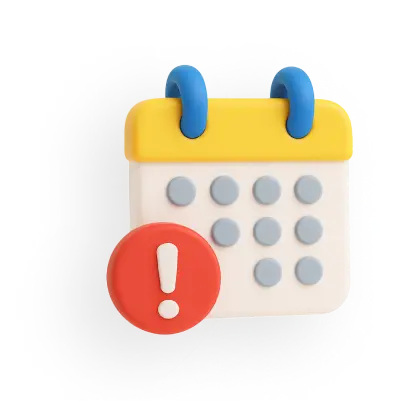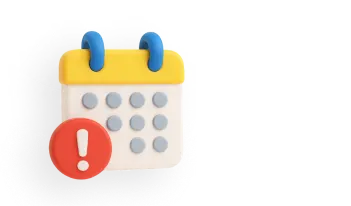Aadhaar DBT Link - Benefits, How to Link & Status Check
Beneficiaries must link their Aadhaar with their bank accounts to receive Direct Benefit Transfer (DBT) benefits. This article covers:
- How to link Aadhaar with DBT?
- How to check Aadhaar DBT link status?
- Benefits of linking Aadhaar with DBT
What is DBT?
The Government of India launched the Direct Benefit Transfer (DBT) scheme on 1 January 2013, to streamline subsidy distribution by directly transferring funds to beneficiaries’ bank accounts. This initiative aims to eliminate leakages by removing intermediaries and ensuring the direct transfer of benefits/subsidies to beneficiaries’ bank accounts.
As a DBT beneficiary, you simply need a DBT Aadhaar link to your savings account to receive your DBT payments seamlessly. Once linked, your DBT funds will be directly credited to your chosen bank account, ensuring faster, more secure, and hassle-free transactions.
What is Aadhaar?
Each person is given a 12-digit identifying number called Aadhaar by the Government of India's Unique Identifying Authority of India (UIDAI). In India, it is a legitimate form of identification and evidence of address.
Any resident of India who satisfies the requirements of the UIDAI verification procedure, irrespective of age or gender, is eligible to enrol in Aadhaar. Individuals are only required to enrol once, and enrolment is free. Aadhaar is created for one enrolment ID when there are several, and the others are rejected as duplicates.
Aadhaar is unique to each individual and valid for a lifetime. It enables residents to access various government and non-government services, including banking, mobile phone connections, and welfare schemes.
Benefits of DBT
Following are the main advantages DBT:
- By linking DBT and bank accounts, there can be real-time tracking of transactions with end-to-end visibility into disbursement of funds.
- DBT transfer eliminates fraud and mismatch in transfer of subsidies and improves accountability and governance.
- DBT crediting of subsidies into beneficiaries' bank accounts allows subsidies to reach intended recipients without diversion or delay.
- DBT has wider economic consequences. It injects cash directly into the system, which encourages consumer expenditure and triggers demand for goods and services.
- By paying out subsidies directly into savings accounts, DBT incentivises financial discipline, which enables beneficiaries to build improved money management skills.
- Conventional welfare distribution is associated with high administrative expenses, such as manual handling of cash, paperwork, and logistics. DBT minimises the expenses of conventional welfare distribution, resulting in huge cost savings for the government and improved resource allocation.
- DBT provides an inclusive banking system, providing a safe and transparent platform to handle finances, receive subsidies, and access banking products that improve financial stability.
How to Link Aadhaar with DBT?
To receive Direct Benefit Transfer (DBT) benefits in your bank account, follow these simple steps:
Step 1: Go to the branch where you hold your account.
Step 2: Request and fill out the Aadhaar Linking Form.
Step 3: Provide a self-attested copy of your Aadhaar card along with the form.
Step 4: The bank will verify your details and link your Aadhaar to your account.
Step 5: Once linked, your account will be seeded with the NPCI mapper, enabling DBT transactions.
Aadhaar DBT Status Check
You can easily check whether your Aadhaar is linked to your bank account using UIDAI's online portal, the mAadhaar app, a mobile phone, or by visiting your bank branch. Below are the different methods for Aadhaar DBT status check:
Check Aadhaar-Bank Linking Status Online
- Go to the UIDAI official website. Click on ‘My Aadhaar’ and then select ‘Bank Seeding Status’ under ‘Aadhaar Services’.
- You will be redirected to the MyAadhaar portal. Enter your Aadhaar number and captcha, then click on Login.
- You will receive a One-Time Password (OTP) on your registered mobile number. Enter the OTP to proceed.
- Click on ‘Bank Seeding Status’. You will now see the list of bank accounts linked to your Aadhaar.
Check Aadhaar-Bank Linking Status via mAadhaar App
- Install the mAadhaar app from the Google Play Store or Apple App Store.
- Open the app and log in using your Aadhaar credentials.
- Click on ‘My Aadhaar’, then select ‘Aadhaar-Bank Account Link Status’.
- Enter your Aadhaar number and captcha. Click on Generate OTP and enter the OTP received on your registered mobile number.
- After verification, the app will display your Aadhaar-linked bank account details.
Check Aadhaar-Bank Linking Status by Visiting Your Bank
- Go to the nearest branch where you have your bank account.
- Request an executive to check your Aadhaar linking status by providing your Aadhaar number.
- The bank representative will verify and inform you about your Aadhaar-bank linking status.
Why link Aadhaar with DBT?
Linking Aadhaar with DBT is essential for the following reasons:
- Aadhaar DBT link helps to eliminate leakages, reduce fraud, and ensure that welfare benefits reach the right individuals without intermediaries.
- Linking Aadhaar with Direct Benefit Transfer (DBT) enhances the efficiency and effectiveness of subsidy distribution by ensuring seamless, transparent, and secure fund transfers to beneficiaries' bank accounts.
- By linking Aadhaar with bank accounts, DBT promotes financial inclusion by encouraging digital transactions and expanding access to formal banking services. This empowers individuals to manage their finances more effectively.
- Subsidies deposited directly into bank accounts give beneficiaries greater financial control, enabling them to meet basic needs and pursue socio-economic opportunities with independence and security.
- Aadhaar authentication and digital payment mechanisms enhance transparency and accountability by enabling real-time tracking of fund transfers and beneficiary accounts, reducing the risk of corruption and fund mismanagement.
Role of Aadhaar in DBT
Aadhaar serves as a crucial element to maximise the effectiveness of social welfare schemes through a secure, unified, and reliable identity authentication mechanism. DBT directly transfers the subsidy and benefits of welfare to the beneficiaries' bank accounts using Aadhaar linkage. It prevents numerous documents usage and eradicates duplicate or fraudulent recipients.
The Pradhan Mantri Jan Dhan Yojana (PMJDY) has also increased financial inclusion, allowing for 523+ million bank account openings and mainstreaming marginalised populations into the formal banking sector.
Aadhaar-based DBT has brought about substantial government savings by removing imposter beneficiaries, amounting to 4.15 crore fake LPG connections and 5.03 crore duplicate ration cards, and ensuring effective subsidy delivery. Through the JAM Trinity (Jan Dhan-Aadhaar-Mobile), Aadhaar has empowered millions by ensuring direct benefit transfers, reducing leakages, and eliminating middlemen.
Benefits of Linking Aadhaar With DBT
- Aadhaar's biometric authentication helps ensure that the benefits reach the targeted beneficiaries by reducing the possibility of duplicate or false beneficiaries.
- DBT allows for straight transfer of money to the beneficiary's bank account, which is more accountable and monitorable in real time.
- DBT facilitates more expansive access to formal banking services, particularly in rural regions, by encouraging beneficiaries to link their bank accounts.
- Direct transfers eliminate the need for middlemen, simplifying the payout procedure and reducing administrative expenses.
- Beneficiaries are empowered when they get subsidies straight into their accounts, giving them more financial autonomy.
Linking your Aadhaar number with your bank account provides a lot of advantages, especially to those looking to avail Direct Benefit Transfer (DBT) schemes. Even though it is not compulsory for common banking operations, the government makes Aadhaar linkage compulsory for those who want to avail DBT benefits, like subsidies and pensions.
Related Articles:
1. Aadhaar Card Link with Mobile Number Status Check
2. How to Link Aadhaar Number With PAN Card Online?
3. How to Place & Get Aadhaar Card Reprint?
4. How to Update Aadhaar Card Biometrics?
5. How to Download a COVID Vaccine Certificate with an Aadhaar Number?
Frequently Asked Questions



